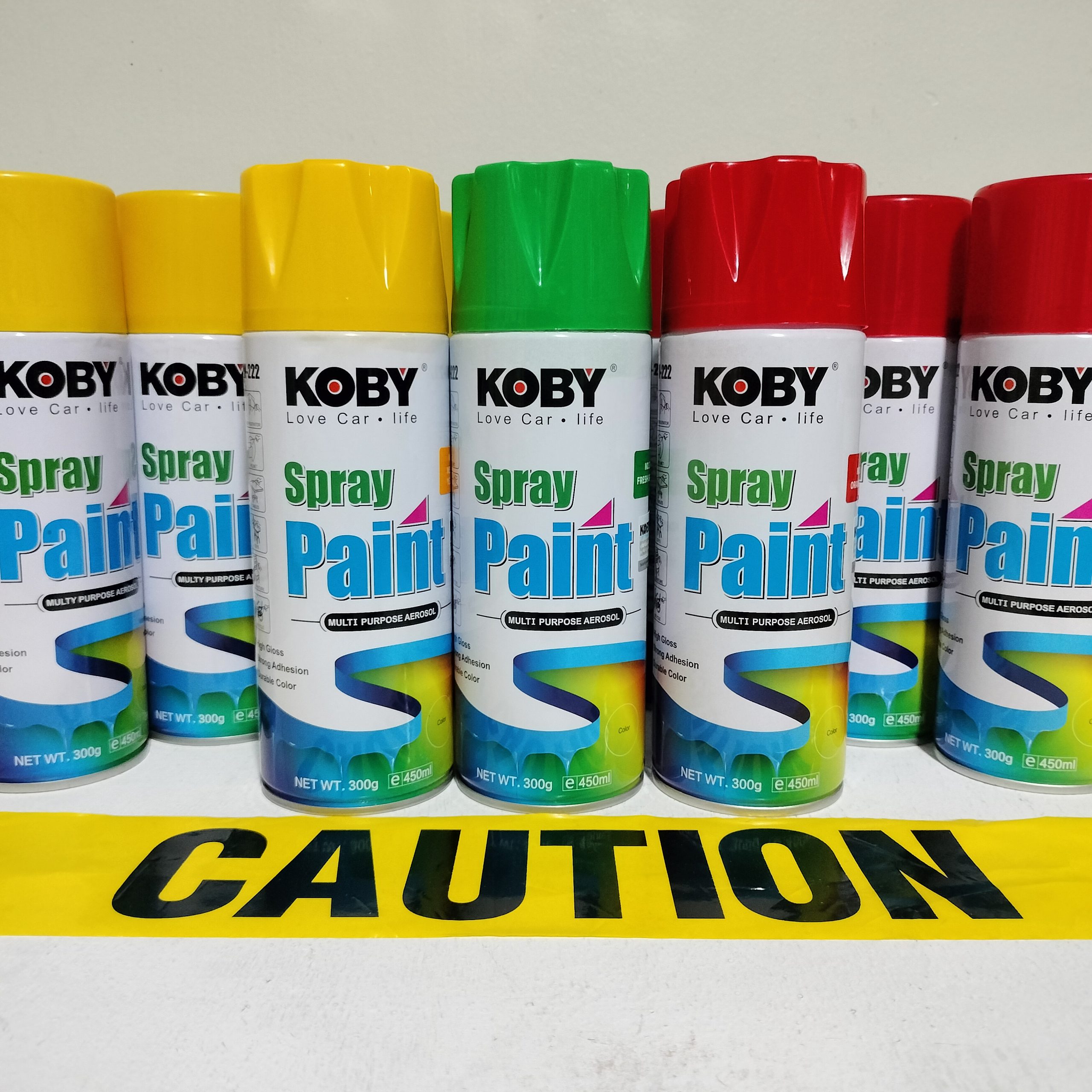QUEZON CITY — As part of its vigilant campaign to protect Filipino children and other vulnerable sectors from lead exposure, the EcoWaste Coalition appealed to law enforcement agencies to stop the further importation, distribution, and sale of lead-containing Koby Spray Paint in the country.
The group’s plea is in support of the national ban on paints containing lead additives above the maximum limit of 90 parts per million (ppm) adopted 11 years ago.
The said limit is embodied in the Chemical Control Order (CCO) issued by the Department of Environment and Natural Resources (DENR) in 2013, which also provided for the phase-out of leaded decorative and industrial paints by December 2016 and December 2019, respectively.
The group appealed for law enforcement action after detecting dangerous levels of lead above 10,000 ppm on three variants of the new Koby Spray Paint, a multi-purpose aerosol used for coating toys, bicycles, helmets, furniture, and appliances as shown on the paint canister.
The products, manufactured between June 14 to June 16, 2023, were procured for P84 each from a local online seller. Like the old Koby batches, the paint’s foreign manufacturer and/or local distributor are not identified on the product label. The country of manufacture is also not indicated.
Using an X-Ray Fluorescence (XRF) device, the group detected 48,430 ppm on the medium yellow Koby paint, 39,570 ppm on the fresh green, and 10,160 ppm on the orange-red, which are way in violation of the 90 ppm limit.
Laboratory tests commissioned by the EcoWaste Coalition found violative levels of lead on old batches of bright-colored Koby Spray Paint, including canary yellow and Suzuki red colors, which the Food and Drug Administration (FDA) subsequently banned through Advisory No. 2020-1585.
Previously analyzed deep red, Mars red, orange-red, deep yellow, and medium yellow Koby paints were also found contaminated with excessive amounts of lead used as a pigment, drying catalyst, or as a rust inhibitor in paint formulations.
Lead in paint, a major source of childhood lead exposure can adversely affect the brain and the central nervous system, as well as the blood, cardiovascular, digestive, skeletal, and renal systems. Lead is also a known endocrine-disrupting chemical (EDC) and a reproductive toxicant.
Childhood lead exposure can bring about reduced intelligence, inattentiveness increased rates of hyperactivity, impaired learning ability, and conduct disorder, aggression, and other behavioral problems.
“There is no safe level of lead exposure,” according to the World Health Organization (WHO), which has listed lead among the “ten chemicals or groups of chemicals of major public health concern.”





